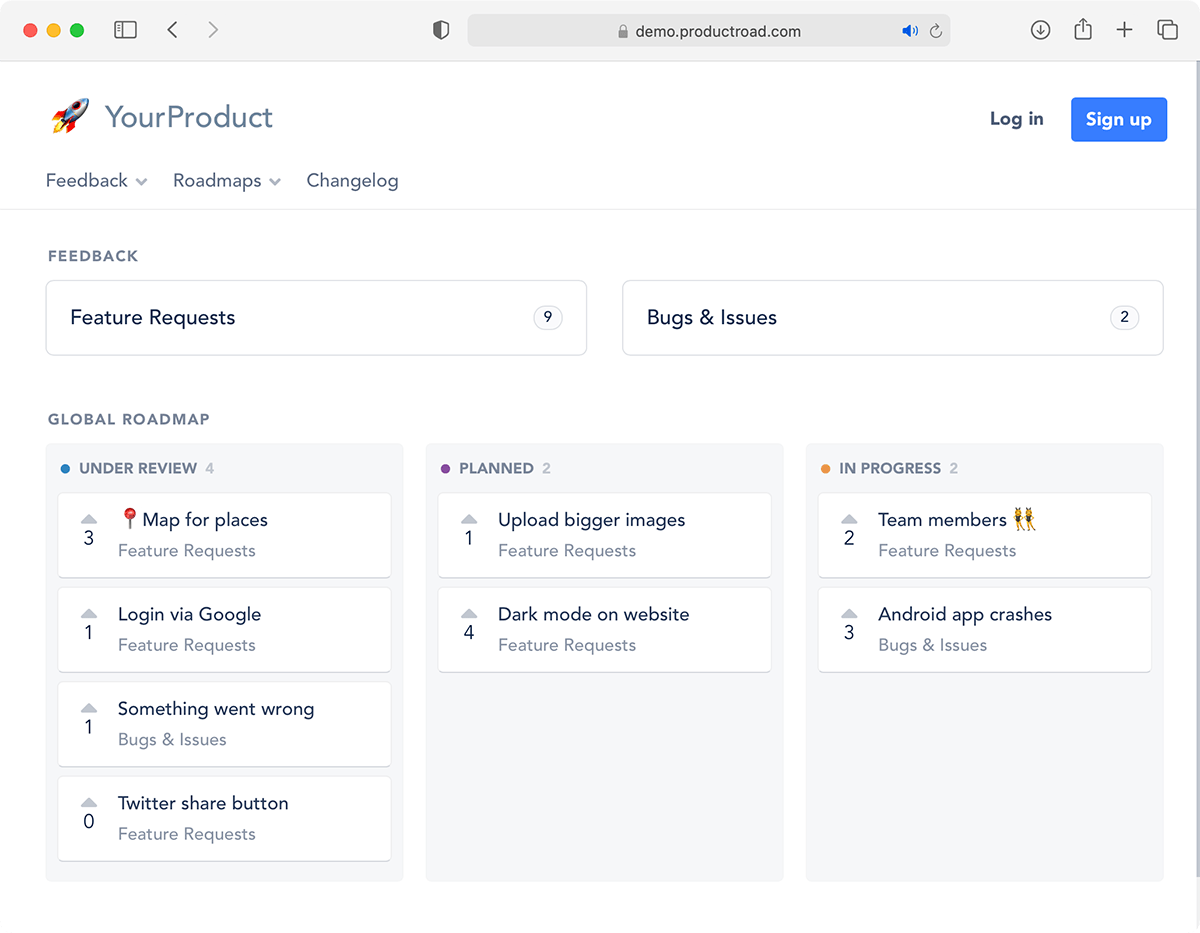As a product manager or team leader, you know the importance of gathering and analyzing user feedback to drive product development and improve the user experience. But with so much data coming in from various channels, it can be challenging to manage and make sense of it all.
Here are some tips for effectively managing your user feedback:
- Set up a feedback system.
First and foremost, you need a system in place for collecting and organizing user feedback. This could be a dedicated feedback form on your website, a survey tool, or a platform like ProductRoad.com that allows users to vote on features and leave comments. - Monitor feedback regularly.
Make sure to regularly monitor and review incoming feedback so you can quickly address any issues or concerns raised by users. This could be done daily, weekly, or monthly, depending on the volume of feedback you receive. - Prioritize feedback.
Not all user feedback is created equal, so it’s important to prioritize which feedback to address first. This could be based on the number of users requesting a particular feature, the overall sentiment of the feedback, or its potential impact on the user experience.
- Involve your team.
Don’t try to manage user feedback on your own. Involve your team in the process and make sure everyone has access to the feedback and knows how to use it to inform product decisions. - Use feedback to inform product decisions.
User feedback should not be viewed as a nuisance, but rather as valuable insights that can inform your product development decisions. Use the feedback to identify areas for improvement, prioritize new features, and make data-driven decisions. - Provide clear communication.
Make sure to clearly communicate to users how and where to provide feedback, as well as how their feedback will be used. This can help to encourage more users to provide feedback and build trust with your audience. - Respond to feedback.
When users take the time to provide feedback, it’s important to acknowledge their input and let them know that their feedback has been heard. This could be through a simple thank-you message, or a more detailed response outlining how their feedback will be used. - Keep track of feedback over time.
Don’t just review and address feedback as it comes in, but also keep track of feedback over time. This can help you identify trends and patterns in user feedback and make more informed decisions about product development. - Share feedback with stakeholders.
User feedback should not be kept within the product team, but should be shared with other stakeholders, such as marketing and sales teams. This can help to align the entire organization around the needs and wants of the user.
By following these tips, you can effectively manage your user feedback and use it to drive product development and improve the user experience. Happy customers are essential for the success of any product, so make sure to prioritize their feedback and use it to inform your decisions.
